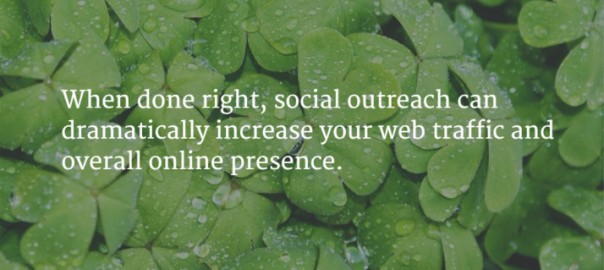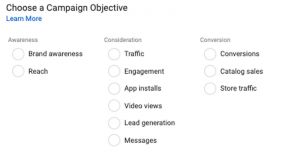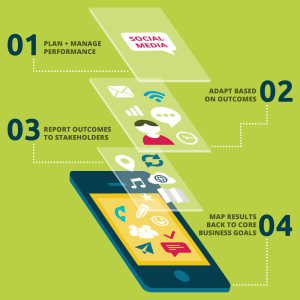Let’s start by saying:
There’s a right way to self-promote on social media, and there’s a wrong way.
The question is: which side are you on?

You have your hard work done, and you want people to notice it. That’s understandable, but why waste all your time and effort taking the unethical or ineffective approach?
If you want to get people to go to your website and read your fresh content, take the time to research and act accordingly.
These 6 blog promotion best practices will help you get the most out of social media and develop the presence you need to make an impact for yourself and your blog.
———
1) Do your necessary research
There’s nothing worse than spending all that time creating your content and promoting it on social media just to be completely missed or ignored.
That can easily be avoided if you just do the necessary research beforehand.
The first step to doing your research is to establish your baseline:
- Who do you want to reach?
- On which social media platforms are they most active?
- When would you most likely reach them?
Once you know all that, you’re ready to examine your possible actions themselves:
- Which Facebook or LinkedIn groups or Google+ communities are most relevant and useful for your content?
- Which hashtags on each of the different platforms would help you most with reaching your target audience?
- Are there any influential social users who you could interact and build relationships with to better reach your audience?
After you have done all the research you can in advance, you’re one step closer to self-promoting effectively.
2) Build influence in groups before self-promoting
Some social platforms have groups where you can share your thoughts and ask questions on various topics and themes. The leading networks with groups include: Facebook, LinkedIn and Google+, although the latter uses “Communities” as its groups.
Regardless of which groups you join, you should never blatantly self-promote in them. It’ll turn people off of your content. In some cases, doing so can even get you banned from the group.
Instead, you can get people’s attention by providing relevant value for group members. Answer questions, and ask questions.
You can share your work if you’re doing so to help someone, not if the sole purpose is to advertise and get traffic.
3) Don’t use tweet bursts to get attention
Tweet bursts are essentially those times when a user tweets a lot within a short time period.
When you send tweet bursts, you overwhelm your followers’ feed. If you use the same hashtag too much, you can overwhelm that feed too.
Nobody likes to see an overabundance of tweets from the same user in a short span of time, especially when those tweets are of low-value or full of self-promotion.
The consequences:
- Lose followers
- Lose potential followers
- At minimum, get muted
The solution:
Space out your tweets. When you do, you not only avoid annoying people. You also reach a wider audience from different time zones.
There is one exception to this rule: Twitter chats.
When you want to participate in a live, hashtag-based chat for a conference or as part of a scheduled discussion, a tweet burst is inevitable and expected. In those cases, you can tweet a lot, but there is one important task you must do right beforehand:
Warn your followers with a tweet notice.
Tweet bursts are annoying to those not doing the tweeting, especially when you’re only sending out self-promotional content. Space out your tweets, and you’ll reap far more rewards with far fewer consequences.
4) Use a variety of hashtags to get more reach
Sure, when you have a blog post about a specific topic, you’ll want to use the hashtag that relates best to your post. You might want to use it for most of your tweets and posts because you think it’ll help you reach your target audience.
That’s true. Your ideal hashtag may actually help you.
But it’s not the only one you can use.
Find other hashtags that are popular for your subject matter and use that variety in your tweets and posts.
On the other hand, if you want to dedicate the time and effort, create your own hashtag for your blog and work to make it trendy / known. This works great for Twitter chats, but it can also help you build a stronger presence in general online.
When you choose a wider variety of hashtags for your content, you not only reach a bigger audience. You give your tweets and posts a fresh look for your existing followers and fans. So why not take the small, extra step to do this?
5) Formally mention those you cite in your posts
Are you writing research-backed content on your blog? Do you cite other blogs or resources in your work?
This is a great opportunity for you to get your work noticed.
After you publish your post, let those users you cite know they’ve been included. On the various social networks, you have the chance to formally tag or mention your sources to have them notified of your post.
On Facebook, Twitter, Instagram and LinkedIn, use the @ followed by their name or handle.
On Google+, use the + followed by their name.
Make sure you select the name properly so that it changes colors or gets highlighted.
The possible results:
- They’ll get a notification of your mention.
- You’ll get their attention.
- They’ll share your work with their own audience.
- They’ll follow your account.
When done right, this approach can dramatically increase your web traffic and overall online presence. You don’t want to spam people, but contacting them when they’ve been cited is an appropriate and effective thing to do for blog promotion.
6) Find the right tools to promote your work
Face it. You can’t do this all alone. You need to find the tools and resources to help you with your blog promotion.
When you’re trying to write articles every week, you don’t have time to manually post and tweet in real-time every time. You need a scheduling tool, such as Buffer or Hootsuite to give you that extra time to write.
You also need tools to analyze…
- Your audience
- Your hashtags
- Your best times to tweet and post
- Your activity results
- And more…
Some analytics tools include:
A tool to help you find the most engaging content and key influencers on social media.
A tool for researching and analyzing the most effective hashtags on social media.
A tool for all things Twitter analytics.
———
Recap:
- Do your necessary research
- Build influence in groups before self-promoting
- Don’t use tweet bursts to get attention
- Use a variety of hashtags to get more reach
- Formally mention those you cite in your posts
- Find the right tools to promote your work
Digital & Social Articles on Business 2 Community
(142)













